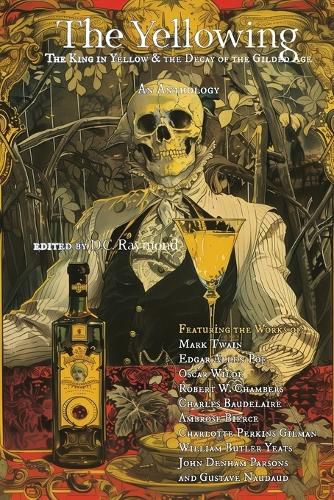Readings Newsletter
Become a Readings Member to make your shopping experience even easier.
Sign in or sign up for free!
You’re not far away from qualifying for FREE standard shipping within Australia
You’ve qualified for FREE standard shipping within Australia
The cart is loading…






This title is printed to order. This book may have been self-published. If so, we cannot guarantee the quality of the content. In the main most books will have gone through the editing process however some may not. We therefore suggest that you be aware of this before ordering this book. If in doubt check either the author or publisher’s details as we are unable to accept any returns unless they are faulty. Please contact us if you have any questions.
Traditional values and art, ever at odds, become cartoon inversions s of themselves: One side, once conservative, grows increasingly authoritarian and revolutionary. The other, once creative and playfully disruptive, now preaches a reactionary gospel against the senses, embracing art without purpose, hedonism, debauchery, and rejecting not realism, but reality itself. And just who is the "King in Yellow"?
Surely, the end must be near.
The Yellowing is an anthology collecting not a genre or style, but a period, like a time capsule. Its aim is to show you not only Robert W. Chambers' King in Yellow stories but also their influences and context: stories and poems quoted by Chambers, stories that had obvious influence (and those stories' influences), as well as poems and stories from the same period, sometimes called the Gilded Age, sometimes Fin de siecle, sometimes called the Yellow Nineties. Throughout, certain motifs emerge: decadence (decay), religion, corruptive art, France, fear, endings, but most of all, the color Yellow, which came to represent all of the above and all comes to a head in the same year: 1895, the date of Chambers' publishing of King in Yellow collection. Fiction and non-fiction include:
Edgar Allen Poe's Masque of the Red Death, which inspired several aspects of the King. Charlotte Perkins Gilman's The Yellow Wallpaper, a story of gaslighting and madness using Yellow as its symbol from only a few years prior. Mark Twain's Mysterious Stranger: an unfinished final masterpiece detailing a group of young boys' encounter with a stranger named Young Satan. Oscar Wilde's Salome, the play that led to his arrest. Ambrose Bierce's Hastur and Carcosa stories introduce the words Chambers would make notorious. Omar Khayyam's Rubaiyat, the quatrains of the Astronomer-Poet of Persia that Chambers oft quoted. John Denham Parson's Our Sun-God, a revealing dissertation on Abrahamic religions' origins from the same year. Poems by William Butler Yeats, Charles Baudelaire, Bliss Carman, and Gustave Nadaud
$9.00 standard shipping within Australia
FREE standard shipping within Australia for orders over $100.00
Express & International shipping calculated at checkout
This title is printed to order. This book may have been self-published. If so, we cannot guarantee the quality of the content. In the main most books will have gone through the editing process however some may not. We therefore suggest that you be aware of this before ordering this book. If in doubt check either the author or publisher’s details as we are unable to accept any returns unless they are faulty. Please contact us if you have any questions.
Traditional values and art, ever at odds, become cartoon inversions s of themselves: One side, once conservative, grows increasingly authoritarian and revolutionary. The other, once creative and playfully disruptive, now preaches a reactionary gospel against the senses, embracing art without purpose, hedonism, debauchery, and rejecting not realism, but reality itself. And just who is the "King in Yellow"?
Surely, the end must be near.
The Yellowing is an anthology collecting not a genre or style, but a period, like a time capsule. Its aim is to show you not only Robert W. Chambers' King in Yellow stories but also their influences and context: stories and poems quoted by Chambers, stories that had obvious influence (and those stories' influences), as well as poems and stories from the same period, sometimes called the Gilded Age, sometimes Fin de siecle, sometimes called the Yellow Nineties. Throughout, certain motifs emerge: decadence (decay), religion, corruptive art, France, fear, endings, but most of all, the color Yellow, which came to represent all of the above and all comes to a head in the same year: 1895, the date of Chambers' publishing of King in Yellow collection. Fiction and non-fiction include:
Edgar Allen Poe's Masque of the Red Death, which inspired several aspects of the King. Charlotte Perkins Gilman's The Yellow Wallpaper, a story of gaslighting and madness using Yellow as its symbol from only a few years prior. Mark Twain's Mysterious Stranger: an unfinished final masterpiece detailing a group of young boys' encounter with a stranger named Young Satan. Oscar Wilde's Salome, the play that led to his arrest. Ambrose Bierce's Hastur and Carcosa stories introduce the words Chambers would make notorious. Omar Khayyam's Rubaiyat, the quatrains of the Astronomer-Poet of Persia that Chambers oft quoted. John Denham Parson's Our Sun-God, a revealing dissertation on Abrahamic religions' origins from the same year. Poems by William Butler Yeats, Charles Baudelaire, Bliss Carman, and Gustave Nadaud